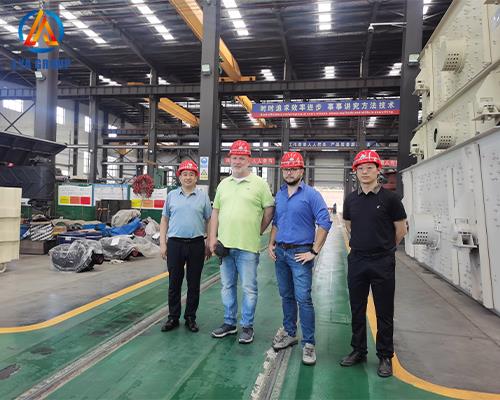Production line for plastic paver molds
News 2024年2月2日 71

To set up a production line for plastic paver molds, you would require a series of equipment and processes specifically designed for manufacturing plastic molds. Here are the key components and steps involved in a typical production line for plastic paver molds:
Mold design and preparation: Begin by designing the plastic paver molds using computer-aided design (CAD) software. Once the design is finalized, prepare the mold prototypes through methods like 3D printing or CNC machining. The prototypes will serve as the basis for creating the production molds.
Mold production: The production molds for plastic paver molds can be manufactured using various techniques, such as injection molding or compression molding. Injection molding is a common method where molten plastic is injected into a mold cavity under high pressure. Compression molding involves placing plastic material into a mold cavity and applying heat and pressure to shape it. The choice of molding method depends on factors such as mold complexity, production volume, and material properties.
Material preparation: Select the appropriate plastic material for the paver molds. Common plastics used for paver molds include polypropylene (PP) and high-density polyethylene (HDPE) due to their favorable properties like durability, flexibility, and resistance to weathering. The plastic material needs to be prepared by melting and blending it with any desired additives or colorants to achieve the desired characteristics.
Molding process: In the molding process, the prepared plastic material is fed into the injection molding or compression molding machine. The machine applies heat and pressure to the plastic material, causing it to flow and fill the mold cavities. The molds are then cooled to solidify the plastic material and form the paver molds.
Cooling and demolding: After the plastic material has solidified, the molds are opened, and the newly formed plastic paver molds are removed. Cooling time may vary depending on the plastic material and mold design. Cooling can be accelerated using cooling systems or water baths.
Finishing and quality control: The plastic paver molds may undergo post-processing steps for finishing touches, such as trimming excess plastic, smoothing edges, and removing any imperfections. Quality control measures should be implemented throughout the production line to ensure that the molds meet the required specifications and standards. This can involve inspecting the molds for dimensional accuracy, surface finish, and structural integrity.
Packaging and storage: Once the plastic paver molds have been inspected and approved, they are typically packaged and stored for shipment or further distribution. Packaging methods can vary depending on the size and shape of the molds, but common practices include bundling or stacking them in suitable containers to protect them from damage during transportation and storage.